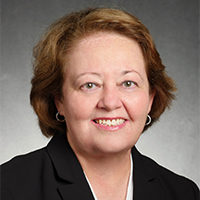Meet your new career companion, Nursegrid Learn.
Meet your new career companion, Nursegrid Learn.
In my career, I have studied thousands of employee survey results from hospitals all around the country. As I consider Nursegrid’s survey results from more than 15,000 nurses, several things catch my attention:
I think these results contain at least five implications for healthcare leaders as we move beyond this pandemic and begin looking to the future.
The past few months have brought a tremendous amount of pain and suffering to our world. Hopefully, we can learn from our experiences and be better prepared for future threats.

By Robin L. Rose, MBA
VP, Healthcare Resource Group![]()
Thank you caregivers – your unwavering commitment, courage and selflessness inspires us! To support caregivers responding to the crisis, HealthStream has assembled free COVID-19 resources and training which can be found at healthstream.com/coronavirus
iPhone® and App Store® are registered trademarks of Apple Inc. Google Play and the Google Play logo are trademarks of Google LLC.